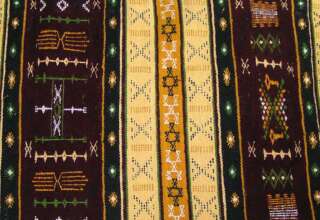
Demographics and Culture
According to the 14 December 2021 census, the population was 29,389,150, up from 22,671,331 at the 2014 census. According to a Demographic and Health Surveys nationwide survey, the total fertility rate stood at 4.3 children per woman in 2021 (with 3.6 in urban areas and 5.3 in rural areas), down from 5.0 children per woman in 2012. It is estimated that 78 languages are spoken in Ivory Coast.[114] French, the official language, is taught in schools and serves as a lingua franca. One of the most common indigenous languages is Dyula, which acts as a trade language in much of the country, particularly in the north, and is mutually intelligible with other Manding languages widely spoken in neighboring countries.
About 77% of the population is considered Ivorian. Since Ivory Coast has established itself as one of the most successful West African nations, about 20% of the population (about 3.4 million) consists of workers from neighbouring Liberia, Burkina Faso, and Guinea. About 4% of the population is of non-African ancestry. Ivory Coast has a religiously diverse population. According to the latest 2021 census data, adherents of Islam (mainly Sunni) represented 42.5% of the total population, while followers of Christianity (mainly Catholic and Evangelical) comprised 39.8% of the population. An additional 12.6% of the population identified as irreligious, while 2.2% reported following animism (traditional African religions.
Each of the ethnic groups in the Ivory Coast has its own music genres, most showing strong vocal polyphony. Talking drums are common, especially among the Appolo, and polyrhythms, another African characteristic, are found throughout Ivory Coast being especially common in the southwest. Traditional cuisine is very similar to that of neighbouring countries in West Africa in its reliance on grains and tubers. Cassava and plantains are significant parts of Ivorian cuisine. A type of corn paste called aitiu is used to prepare corn balls, and peanuts are widely used in many dishes. Attiéké is a popular side dish made with grated cassava, a vegetable-based couscous. Common street food is alloco, plantain fried in palm oil, spiced with steamed onions and chili, and eaten along with grilled fish or boiled eggs. Chicken is commonly consumed and has a unique flavor because of its lean, low-fat mass in this region. Seafood includes tuna, sardines, shrimp, and bonito, which is similar to tuna. Mafé is a common dish consisting of meat in peanut sauce.






